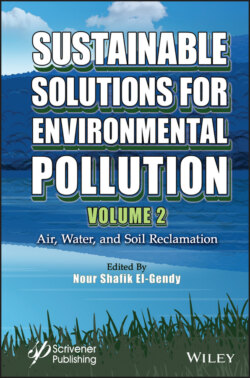Читать книгу Sustainable Solutions for Environmental Pollution, Volume 2 - Группа авторов - Страница 21
1.6 Constructed Wetlands (CWs)
ОглавлениеIn terms of wastewater treatment, natural self-purification processes involving vegetation, sediments and their associated biocenosis and microbiocenosis (phytobiome) are applied in CWs (Vymazal, 2007). These latter, together with iron oxidation bioreactors and composting reactors belong to the so-called passive biological treatments. The advanced technologies include acid mine drainage (AMD) treatment in bioreactors with sulfate-reducing bacteria cocktails (Neculita et al., 2007) and CWs (Johnson and Hallberg, 2005). The cost factor involved in the passive treatment of water may be a large start-up cost but is ideal in the natural rehabilitation of water over time.
Natural wetlands have been used for a long time for disposal of waste-water, without really considering the negative effect that pollution can have on these aquatic ecosystems. CWs aim to reproduce (and intensify) the processes observed in natural wetlands, swamps, or marshes. They can be classified according to: 1) hydrology (surface flow versus subsurface flow); 2) macrophyte types (emergent, free-floating, or submerged plants); and 3) flow path (horizontal or vertical). The major flow types are as follows:
– Free Surface Flow CWs (FSF-CWs), as shown in Figure 1.4a, are ponds with emergent macrophytes. A free-water CW reproduce natural processes of a natural wetland, where water flows slowly through the wetland, promoting the deposition of particles, the removal of pathogens and the degradation and uptake of OM and nutrients by microbes and macrophytes;
– Floating macrophyte mats on CW surface, or Floating Treatment CWs (FT-CWs), as shown in Figure 1.4b, use natural water macrophytes on buoyant mats drifting on the surface of the water. The floating macrophyte mat promotes the hydraulic flow of water below and through the macrophytes, with a free root system that grows deeper into the water column and function as a natural filter;
– In subsurface flow CWs (SSF-CWs), there is no superficial water, and the water level is kept below in the filter material, as shown in Figure 1.4 (c and d): their advantages and limits are presented in Table 1.1.
Figure 1.4 (a) Simplified scheme of a Free Surface Flow CW (SFS-CW); (b) Schematic representation of a floating macrophytes surface flow CW (FT-CW); (c) Principles of Horizontal subsurface flow CW (HSSF-CW); and (d) Principles of Vertical subsurface flow CW (VSSF-CW).
Table 1.1 Advantages and disadvantages of vertical and horizontal subsurface flow of CWs in water treatment (Luederitz et al., 2001).
| Wetland type | Advantages | Disadvantages |
| Vertical Flow VSSF-CW | Lower area demand | Short flow distance |
| Good oxygen supply, good nitrification | Poor denitrification | |
| Simple hydraulics | Higher technical demands | |
| High purification capacity from the start | Loss of performance with phosphorous removal | |
| Horizontal Flow HSSF-CW | Long flowing distances, nutrient gradients can be established | High area demand |
| Nitrification and denitrification possible | Careful calculation of hydraulics required for optimal oxygen supply | |
| Longer life cycle | Equal wastewater supply is complicated |
– Horizontal Subsurface Flow CWs (HSSF-CWs), where the effluent moves horizontally inside the filter material, parallel to the surface between the macrophyte roots (Figure 1.4c);
– Vertical Subsurface Flow CWs (VSSF-CWs), where the effluent moves vertically from the planted surface layer down through the substrate and drains down toward a lower drain, as for HSSF-CW (Figure 1.4d).
Because of a more developed root adsorption surfaces, SSF-CWs have a greater rhizospheric effect than FSF-CWs. The rhizosphere is an important interface of sediment-plant microbial interactions, allowing spatial and temporal variations in redox conditions, thus offering a wide spectrum of microbial activities and thus potential pollutant degradation pathways.
SSF-CWs have been found to be more suitable than SFS-CWs in the cases where odorous water or wastewater with high solid content is being treated (Reed and Clearinghouse, 1993). In AMD treatments, anaerobic SSF-CWs are effective when the acidity of a water sample is greater than pH 4. Water is neutralized by the microbial usage of Fe3+ as the terminal electron acceptor. Aerobic settling ponds may be required for metal precipitation. Aerobic wetlands (surface flow) are usually used for metal precipitation and are used as a final step in integrated AMD treatment (Fripp et al., 2000).
Hybrid CWs are the combination of various types of CWs in order to exploit the specific advantages of each type and thus provide aerobic and anaerobic conditions at the same time, conducive to the elimination of nitrogen pollution (Rizzo et al., 2020).
There are two important aspects to consider in the design and operation of CWs: the water flow and the vegetation.
